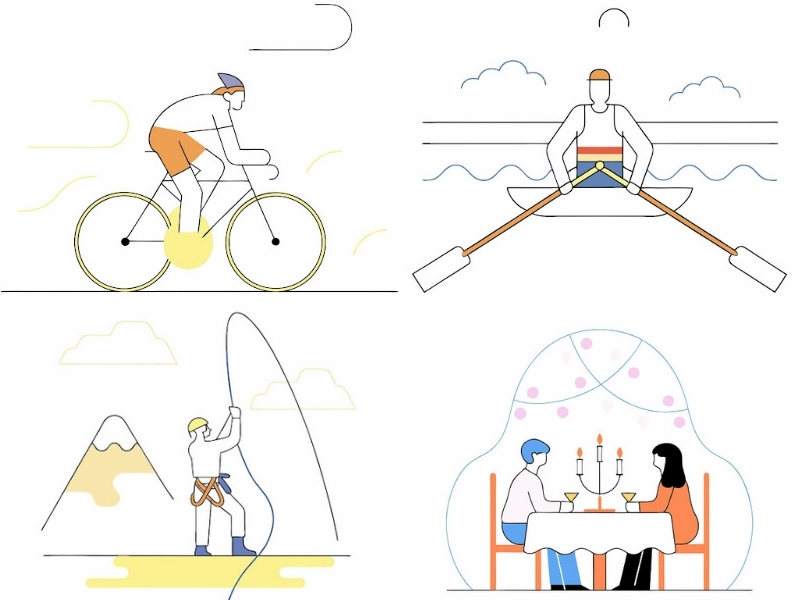
With trust at an all time low, people are turning to nano communities for information, connection, and shared interests. These communities offer DMOs an opportunity to connect their unique attractions to the right people, build loyalty, and take a more targeted and cost-efficient approach to their marketing efforts.
It’s an important time for DMOs looking for strategies to attract more travelers in 2025.
U.S. travel and tourism are experiencing strong growth and recovery in 2025, with the market valued at $2.36 trillion in 2024 and projected to reach $3.1 trillion by 2034. Domestic travel is also expected to surpass pre-pandemic levels with 70% of Americans planning to maintain or increase their travel activities.

The Trust Challenge
Despite strong growth indicators, Travelers have mixed levels of trust in destination marketing, with recent data indicating that only 46% trust the travel industry, dropping to 38% among Gen Z, and 70% reporting their trust was broken by a travel business in the past.
Travelers also perceive that destinations market themselves too similarly via generic messaging, overemphasis on similar attractions, and failure to convey authentic stories and unique experiences specific to their destination.
The Rise of the Nano-Communities
As a result, travelers are turning to more familiar sources for trusted information and recommendations. Compared to all other forms of advertising, 92% of consumers trust recommendations from friends and family, 88% trust recommendations from people they know, and 84% trust peer recommendations.
This has led to a rise in groups called nano-communities. A nano-community refers to a small, highly engaged group of individuals who share a specific interest or niche. These communities are often facilitated by social media platforms and are characterized by their intimate size and high level of interaction.
Building Trust Through Influencer Strategy
These high rates of community-based trust have often led brands to engage in influencer marketing. Given that 81% of travelers use social media to research destinations before booking, and 48% rely on social media platforms for travel inspiration, influencer marketing has played a crucial role in reaching audiences on a more personal level. In fact, 81% of marketers say macro-influencers top their list of ideal influencers.
But over time, even trust in influencers has shifted. Only 23% of consumers were likely to consider a product recommended by well-known bloggers and macro-influencers. Research shows that social media users and algorithms increasingly favor authentic, unpolished content over highly curated posts typically associated with macro-influencers. This shift reflects growing skepticism about the commercial nature of large-scale influencer campaigns, which have broad reach but low engagement rates, are not seen as relatable, and are considered too commercialized.

Enter the Nano-Influencer
Nano-influencers are everyday people who are social media content creators with a modest following of around 1,000 to 10,000 followers. They built their following on platforms like TikTok based on their passion for specific topics or their relatable lifestyle.
92% of consumers trust recommendations from nano-influencers more than traditional advertisements or celebrity endorsements, and they are perceived as more authentic and relatable, which leads to higher trust levels compared to macro-influencers. They are also cost-effective and boast engagement rates of around 6.23%, which often surpass those of larger influencers.

What does this mean for destination marketers?
The traditional approach to destination marketing is broadly identifying audiences whose interests align with the destination’s offering such as Outdoor Enthusiasts, Culinary Curious, or Nightlife Lovers. Content is then broadly developed against these interests in the hopes it will capture the attention of travelers who enjoy one or more of these attractions.
The problem is that most destinations take this buckshot approach to attract visitors rather than looking at more targeted opportunities to attract the nano-communities that share a deep passion for something the destination uniquely offers. By allocating a portion of a campaign to target these nano-communities and developing content that speaks to them directly, destinations have an opportunity to highlight those specific attractions that make them truly unique from the competition.
Winning with Nano Communities
Success with nano communities requires three key elements:
- Specificity: Focus on the details that matter to the audience, such as specific locations, features, or benefits.
- Authenticity: Speak their language and understand their culture in a way that makes them feel seen.
- Engagement: Be conversational and curious by interacting with the community on a human level, not just as a brand.
So, for example, rather than broadly target Outdoor Enthusiasts, which can accommodate a wide range of interests, a destination could focus on its great trail running, connect with nano-influencers in that space, and develop content that speaks directly to those niche communities.
Broad approach: Come to [X] and enjoy the great outdoors at [X] park.
Targeted approach: Whether you’re into Quad Busting, Bushwhacking, or just want to enjoy a fun run in a beautiful setting, you’ll find your stride at [X] park in [X].

Social Media Performance
Nano-influencers
- Instagram: Nano-influencers achieve an average engagement rate of 2.19%, higher than the overall average influencer engagement rate of 1.85% on the platform
- TikTok: Nano-influencers show exceptionally high engagement, with an average rate of 10.3%, more than three percentage points higher than the expected engagement rate for other influencer tiers on the platform.
- Some sources report even higher engagement rates for TikTok nano-influencers, with figures reaching up to 18%.
- Across platforms, nano influencers are achieving average engagement rates of 4%, which significantly outperforms macro-influencers who average around 1.3%.
- In certain cases, engagement rates for nano-influencers can be as high as 35.19%, with the top 10% achieving 11.57%.
DMOs
- Instagram: Travel brands can expect an average engagement rate of 1.9% on Instagram. For Instagram Reels specifically, the engagement rate is slightly lower at 1.7%.
- Facebook: The average engagement rate for travel brands is approximately 0.9%, higher than the cross-industry median of 0.06%, indicating that travel content tends to perform well on this platform.
- TikTok: TikTok shows the highest engagement rates for travel content, with an average of 7.43% per video. This is significantly higher than the cross-industry median of 5.69%, making TikTok a particularly effective platform for destination marketing.
Is it Worth the Investment?
Investing media spend toward nano communities, particularly through nano-influencers, can yield surprisingly robust results compared to traditional macro-influencer strategies, including:
- More than 3x the ROI compared to macro-influencers.
- An average return of over $1,000 for a $50 promotional post - a 20x ROI.
- A 7% conversion rate/post (likes, comments, or shares leading to a sale), which is more than 2x the 3% conversion rate of macro-influencers.
- A return on influencer spend (ROIS) more than 3x higher compared to macro-influencers.
- 1.5% of followers who convert to buyers, compared to only 0.2% for macro-influencers.
- 6.7x more cost-efficient campaigns per engagement compared to similar campaigns with larger influencers.

Does Marketing to Nano-Communities Alienate the Broader Traveler Audience?
Marketing to nano-communities can create a "halo effect", which occurs when positive perceptions and trust within a niche community extend to influence broader consumer groups. This effect offers:
- Increased Word-of-Mouth: Nano-communities are tight-knit networks that widely share positive brand experiences.
- Greater Visibility: Targeted campaigns aimed at nano-communities feature content that often gains traction on broader platforms like TikTok or Instagram, creating a ripple effect where consumers outside the community encounter the brand through viral posts or shared content.
- Improved Brand Perception: Engaging with niche groups signals that the brand is attentive, inclusive, and values its customers, which extends to other consumers who appreciate these qualities.
Conclusion
Nano-communities are the future of brand marketing, offering DMOs the chance to not only differentiate from their competitors but connect more meaningfully with travelers. By targeting the right nano-communities and nano-influencers, DMOs can build greater trust and create brand advocates who uniquely benefit from what their destinations offer.
Submit Your Thought Leadership

Share your thought leadership with the Destinations International team! Learn how to submit a case study, blog or other piece of content to DI.


